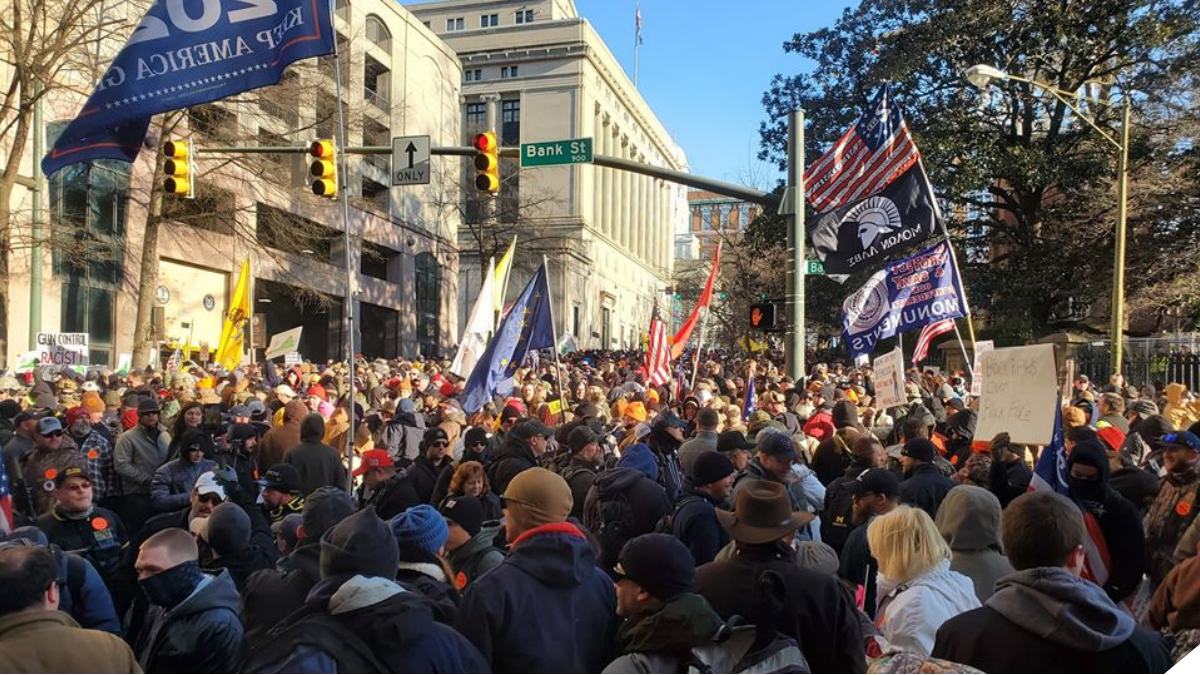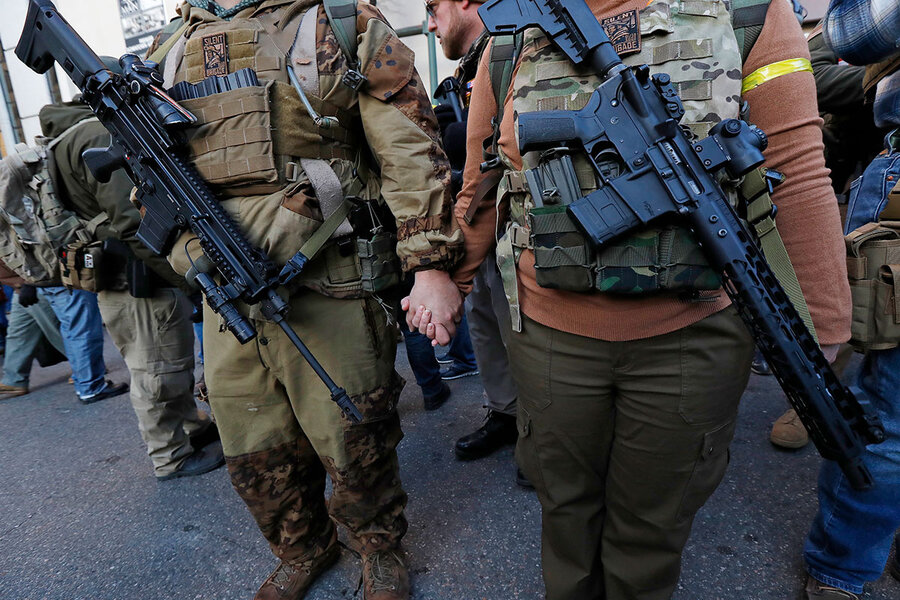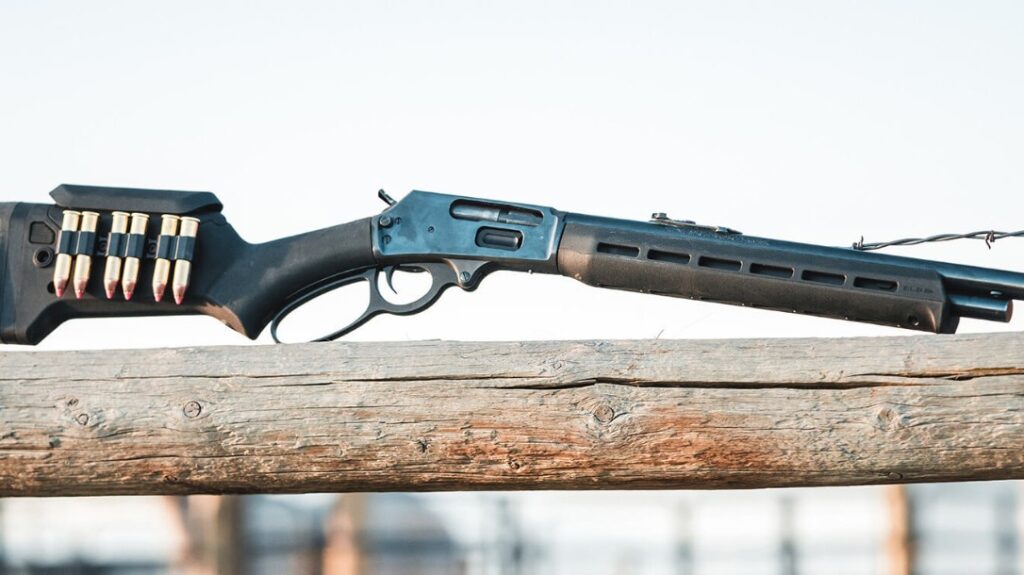Everyone is biased, my dear readers. Everyone. Period.
We are only able to draw on the knowledge of our experiences, we are limited to our own perspective and can only infer to other perspectives based on what we read, hear, and see of them. Knowing our biases establishes our frame of reference and allows us to “true” our information so that it can be received well and used well despite our irremovable biases.
An anti-gun reporter can produce a good piece on firearms, violence, and legislation. A pro-gun person can ride the logic train and appreciate the positive goals of a piece of anti-gun legislation, even while still emphatically disagreeing with it. These are the marks of actively intellectually engaged folks who want to put their minds to solving problems, and who make every effort to not let their bias hinder them.
Advertisement — Continue Reading Below
But ignorance produces its own biases, and often these are far far larger hurdles.
Take the following example,
Virginia’s ‘amazing moment’: The view from ground zero of U.S. gun debate
This piece from the Christian Science Monitor was published prior to the win we landed in Virginia, when the Senate there shelved HB 961. Take a look through the opening paragraphs.
Advertisement — Continue Reading Below
A seismic shift underway in Virginia has lawmakers asking a question once unthinkable for the home of the NRA: How do you ban “America’s gun”?
As chants of “USA! USA!” poured over him, Jeff Hulbert stood at the ready – a soldier, in his eyes, of democracy. Behind him rose the peak of the Virginia Capitol in the state that has become ground zero in the shifting politics of gun rights across the United States.
On a fence fluttered a “We Will Not Comply” banner. Strapped around his shoulder, an Israeli Tavor rifle, which fires the same ammunition as an AR-15 – a military-style weapon that has become popular as an avatar of armed citizenship on the right and decried as a machine of mass death on the left.
Advertisement — Continue Reading Below
Here in the second paragraph we are immediately corralled into the thought channels that this is a Right Wing/Left Wing issue, that this is therefore an extremist issue. It makes anyone who doesn’t identify as extremist (likely the whole audience) pause and disassociate.
It identifies the Israeli Tavor by only a single feature, the fact it fires the same round as the… AR-15 *gasp*, “…that has become an avatar of armed citizenship…”.
But for anyone reading this with a limited knowledge base the bias of their ignorance isn’t going to latch onto the ‘avatar’ line, they are going to associate with the repeated mass media narrative of the AR-15, “…a machine of mass death.”
Advertisement — Continue Reading Below
Why will they gravitate towards that narrative? It’s the sum of their experiences. Their limited experience has been provided by the broad, detail devoid, and often woefully inaccurate mass consumed media channels.
So now the reader steps back and mentally disassociates with “the wings” then latches onto the the limited experiences their exposure gives them about the AR-15 and the associated Tavor, because they fire the same ammunition. If the reader has a strong opinion, they then decry the article as far right/left, when in reality the article most suffers from being insubstantial.
“We think it’s very symbolic to wear our sidearms, to wear a rifle, because the pictures that are taken from here … can live forever and encourage people to remember our rights,” says Mr. Hulbert, a Maryland resident and founder of Patriot Picket, a gun-rights advocacy group.
Advertisement — Continue Reading Below
Token gun guy saying token gun guy thing.
But Cape Charles resident Laura Kinzinger has an opposite reaction. If she saw someone openly carrying a long rifle, she says she’d call the police and then duck, run, and hide.
“It might be legal. But it’s not normal,” she says. “That person might suddenly use it. I mean, there could be accidents. The thought of walking around with an [assault-style] rifle is just horrific. They are designed to kill people. That’s what they do.”
Advertisement — Continue Reading Below
Token scared anti-gun individual decrying the behavior as deviant and strawmanning up with the ‘what if’s’ of horror and death. Ignoring that 22,000 people gathered in close proximity with those death machines… and no one died. No murders, no accidents.
But limited perview opinion again tends to side with Laura, not Jeff. Laura’s statements and the low information opine mass makes her perspective the ‘reasonable’ one at short glance. We are conditioned to take a side, not observe, look at the duality established with the left wing/right wing language.
Firearm rights should be apolitical, and if you look at the political makeup the whole of the gun industry a multitude of views and backgrounds have active and informed representation. But those are informed views, we are talking about the biases of the uninformed.
Advertisement — Continue Reading Below
As complaints of government overreach still echo from the 22,000-strong show of largely armed force in Richmond late last month, newly elected Democrats are moving forward with a ban on new sales of the assault-style rifles, including misdemeanor penalties for possession of magazines that hold more than seven rounds.
The turn of a historically gun-friendly Southern state toward gun restrictions comes as the U.S. Supreme Court takes its first gun rights case in a decade to determine how far municipalities can go to restrict guns. Given that a conservative majority is unlikely to OK broad new restraints, battles at the state level have come to define an epic shift for Second Amendment reformers.
“It is an amazing moment,” says Adam Winkler, a law professor at the University of California, Los Angeles, and author of “Gunfight: The Battle Over the Right to Bear Arms in America.” “A lot of people since [the 2012 Sandy Hook massacre] have expressed disappointment that nothing has changed, but we have actually seen a real shift in American gun politics. Virginia is really the crucible of that.”
Advertisement — Continue Reading Below
Well… that crucible turned into a can. That can got punted into 2021, safely after elections.
The piece steps back and gives us a quick national glimpse of goings on with the Supreme Court reference. We then dive right back to Virginia.
On Monday, the House of Delegates advanced the assault-style ban to its final reading, with Democratic lawmakers contending that it will not infringe on anybody’s Second Amendment rights. Republicans argue otherwise, saying it would criminalize ownership of some magazines, even after Democrats tempered penalties to a misdemeanor. At one point, police escorted protesters out of the chamber. “Whose side are you on?” they shouted at officers.
It was then shelved in the Senate.
But the political fight between blue suburbs and red rural areas over the proposed ban has also bared tensions among gun owners themselves. Does open carry, as Mr. Hulbert hopes, normalize the image of an armed citizenry? Or does it further entrench the idea that the right to carry a long rifle infringes on the freedoms of non-gun owners?
Here we get into the nasty business of defining things. What is a freedom versus what is a courtesy. Does one person carrying a long gun, or a gun period, actually infringe on another person’s rights? Or is it simply discourteous because someone might be made uncomfortable?
Williamsburg, Virginia, resident Josiah Gray says open carry should be restricted to police officers. The parking officer says carrying a gun might make some people feel safer, but others could be intimidated or possibly traumatized, especially if they lost someone they knew to gun violence.
“You never know how it affects other people,” he says. “If you don’t have a uniform, it looks kind of off to the other people that you have a gun.”
Here we see an appeal to power and authority. A uniform makes it okay. We don’t know a thing about the character of the person in the uniform, we truly don’t, but the symbol of monopolized force makes Josiah feel better. Josiah, completely unrelated I’m sure, wears a uniform.
But we have ample proof that a uniform does not a good person guarantee. Michael Dorner of the LAPD and Nidal Hasan, Major of the United States Army, both come to mind. To say little of the myriad other incidents where the government’s near monopoly on “legitimate” use of lethal force was misused and people died.
But, again to the under informed, to the ignorant, Josiah’s argument will ring true and Jeff Hulbert, with his Tavor that shoots AR-15 ammunition (the comparison set earlier), looks again like the deviant.
Some gun owners share those doubts. Few gun owners question the right, but many ask about the “pragmatic aspect of open carry,” says Wake Forest University sociologist David Yamane, founder of the Gun Culture 2.0 blog. “There are many people in the gun community who really dislike open carry as a method of normalizing firearms.”
True, I am one of them. I am not an open carry proponent. Virginia was an exception. Virginia was the necessary statement. 22,000 organized peacefully and armed against an atrociously egregious bill. That bill was making headway from a legislative body willfully ignoring the citizenry. Remember, the sanctuary counties came as a rebuttal before this demonstration.
And now… now the article authors start spewing overly summarized over simplified and erroneous gun nonsense for dramatic effect.
In essence, an open source platform that has sold more than 8 million exemplars on its journey to become “America’s Gun,” the Armalite Rifle, gun owners say, is basically a slick-looking single-fire rifle. Mechanically and caliber-wise, that is correct. But it is also a masterpiece of war. Its military cousin was a replacement for the unreliable M-14; its ability to kill Viet Cong in tight quarters stunned Army researchers.
This paragraph is… it’s mind numbingly hard to read. I am convinced I have to much expertise in this area to appreciate the full effect of it. It’s trying to sound intellectual and it is failing so completely. It goes further over the edge in a bid to make you believe that if you can’t understand it, then you just aren’t intellectually on a high enough level.
In reality, it’s nonsense. Any remotely informed or technically competent individual should be asking questions about the baffling language used.
The AR was first introduced to the civilian population as a hunting rifle, and its advertising slogan belies its appeal: If it is good enough for the military, it is good enough for all of us. The sunsetting of the federal assault weapons ban in 2004 opened an era of gun rights expansion, where three-quarters of states have now loosened regulations on concealed and open carry, and have expanded the rights of lethal self defense.
“…expanded the rights of lethal self defense” is an interesting choice of phrase. It brings to mind the proverbial bloody shirt while expertly squeaking by a few pertinent perspective setting facts.
While ‘defensive use of a firearm’ incidents number in the hundreds of thousands per year, by the lowest estimations, lethal incidents within that group are about 1% of that low estimate with around half being justified police (uniformed, governing authority, assumed just) shootings.
But that arc has been complicated by the gun’s use in a growing number of mass killings, as well as the rise of violent far-right nationalism, members of which law enforcement said posed credible threats as they sought to infiltrate the Richmond rally.
But has not been complicated rise of violent far-left extremism, Antifa for example?
(Warning: You have entered the Tangent Zone)
Possible, I will admit. The foundational makeup of the probable sympathetic demographics of the left and right extreme support counting them as different threats. In short, the people who make up the list of possible radicals come from vastly different backgrounds.
Since the likelihood that those sympathetic to the emerging far-right and those sympathetic to the far-left come from two disparate origin environments, while both are dangerous, those sympathizers on the right have a higher overall likelihood of coming from a background that produces a soldier and who would be familiar with those tools and tasks of soldiering.
We’ve also spent the last two decades fighting insurgency, we’ve raised a generation during this relevant kind of war. We, as a whole population, are more familiar with modern conflict than anyone in 2001 remotely was.
Leftist groups are trying to arm up and prepare, but the right wing politically has a supermajority on the warrior class in this nation. Therefore, if both extremist ends are looking for soldiers, those capable of organized disciplined violence, the right has a far greater chance of finding someone useful among the sympathetic population, who could be radicalized, than the left. The left is looking to balance this but they are fighting years of imbalance and deeply seated attitudes combined with the fact that the ‘new’ left, like Antifa, are very new organizations.
These organizations exist, even as radical or ‘woke’ as they are, in a highly insular first world environment. They did not form in a near perpetual state of warfare like some regional groups have, or within recent warfare/conflict as have others. The extreme right does tap into a pool that has dealt with the decades of warfare, and groups like the Taliban and ISIS are tapping pools of near perpetual warfare. Groups like the Cartels tap similarly experienced and conditioned populations for their soldiers.
The parameters for where these groups can even find sympathetic people to attempt to radicalize are very very different, and there is a lot of truth behind the stereotypes that the radical left is filled with the “fake flannel soy boy” and “*wacky hair color* vegan non-binary SJW” who are used to making their political efforts against “fascists” from their iPhone and not so much like Ukraine 2014.
I’ve gotten off on quite the tangent here, it is just illustrative of just how shallow this article on Virginia gets into a myriad of problems but tries (and fails) to be an accurate synopsis.
The article goes onto cover some more opinions, cite Gallop on 6/10 people wanting an assault weapon ban, cite a professor who feels this is a crusade of the right (not an inaccurate descriptor, but choice language), and finally point out the fact that banning these firearms would have a less than 1% remotely plausible impact on firearms deaths.
The CSM honestly, in my opinion, did a fair job trying to be fair. They just ultimately didn’t know what they didn’t know, and their attempts to generalize spreads more confusion instead of offering a decent base of perspective.
Happy Wednesday People.
















